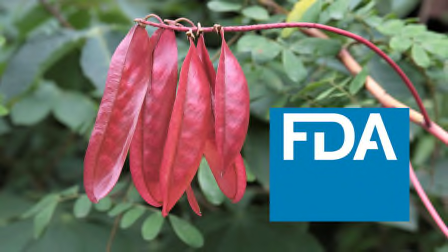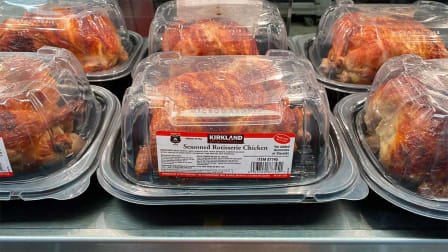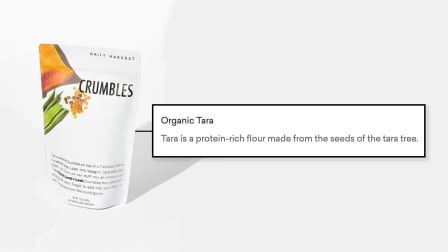The Dangerous Dyes and Other Food Additives States Want to Ban
Following California’s lead, more states are trying to keep harmful additives out of our food and our schools

Just a few months after California became the first state to prohibit the use of four dangerous chemicals in food, lawmakers in Illinois, New York, and Pennsylvania are considering similar bans on those and other food additives.
New York lawmakers are also seeking to close the so-called “generally recognized as safe,” or GRAS, loophole, which many food safety experts consider a large gap in the Food and Drug Administration’s regulatory framework designed to protect Americans from dangerous food additives.
And California is considering a bill that would expand on last year’s landmark law by banning six commonly used food dyes, plus the white pigment titanium dioxide, from food provided in the state’s public schools.
Nearly all the targeted chemicals have been banned in Europe. Yet all are currently used in foods that are widely available throughout much of the U.S., according to a database maintained by the Environmental Working Group (EWG), a nonpartisan research and advocacy group that worked with Consumer Reports to sponsor the California legislation.
What Additives Are Being Targeted, Where, and Why?
Here are summaries of the different chemicals some states want to ban.
Azodicarbonamide
Which state is trying to ban it? New York.
What are the health risks? Azodicarbonamide breaks down during baking into other chemicals, including semicarbazide, which has been shown to cause cancer in mice; and urethane, a human carcinogen.
How is it used? As a whitening agent in flour and to strengthen dough in bread baking.
What foods is it in? More than 50 common supermarket products, most of them packaged breads, rolls, and pastries, according to the EWG database.
Brominated Vegetable Oil (BVO)
Which states are trying to ban it? Illinois, New York, and Pennsylvania. (It’s already banned in California, and last November the FDA announced a proposed federal ban.)
What are the health risks? Linked to neurological problems; thyroid, heart, and liver problems; and behavioral, developmental, and reproductive issues.
How is it used? In sports drinks and sodas to blend liquids that don’t otherwise blend easily, such as oil and water. (The FDA says it keeps citrus flavorings from separating and floating to the top of the beverage.)
What foods is it in? More than 80 sodas and fruit-flavored beverages, according to the EWG, most of them vibrantly colored.
Butylated Hydroxyanisole (BHA)
Which states are trying to ban it? New York and Pennsylvania.
What are the health risks? Linked to cancer in studies of animals.
How is it used? As a preservative to prevent foods that contain oils, fats, and shortenings from going rancid.
What foods is it in? Butter, lard, meats, cereals, baked goods, sweets, beer, vegetable oils, potato chips, snack foods, nuts and nut products, sausage, poultry and meat products, chewing gum, and yeast, according to the National Institutes of Health.
Potassium Bromate
Which states are trying to ban it? Illinois, New York, and Pennsylvania. (It’s already banned in California.)
What are the health risks? Linked to various types of cancer.
How is it used? As a flour “improver,” it’s added to strengthen dough, make baked goods rise higher in the oven, and enhance products’ texture.
What foods is it in? Some 220 products, according to the EWG, including many packaged breads, dumplings, and frozen foods.
Propylparaben
Which states are trying to ban it? Illinois and New York. (It’s already banned in California.)
What are the health risks? Shown to cause endocrine disruption and reproductive issues in lab animal testing.
How is it used? As a preservative, extending the shelf life of packaged foods by preventing the growth of mold and bacteria.
What foods is it in? More than 50 products in U.S. grocery stores, according to the EWG, including many packaged corn tortillas, baked desserts, and cake icing.
Titanium Dioxide
Which states are trying to ban it? California (in schools only) and New York.
What are the health risks? Linked to digestive tract problems, and banned in Europe because scientists there could not rule out genotoxicity, the ability of the substance to damage genetic information in the body’s cells; they also had concerns about damage to the immune system.
How is it used? As a food coloring to make products appear whiter than they otherwise would, and in candy and other products as a kind of “paint primer” to make other colors, added later, appear more vivid.
What foods is it in? More than 2,000 grocery products, according to the EWG, including candy, coffee creamers, cheese, half-and-half, cream-based soups, baking decorations, and sauces.
Red Dye No. 3 (aka FD&C Red No. 3, Red Dye 3, and Erythrosine)
Which states are trying to ban it? Illinois, New York, and Pennsylvania. (It’s already banned in California and is currently under review by the FDA.)
What are the health risks? Found to cause cancer and thyroid tumors in lab animals and has been linked to hyperactivity and other neurobehavioral effects in children. (Health effects like these led the FDA to ban its use in cosmetics more than 30 years ago. The agency said at the time that it planned to ban its use in food, but it never got around to taking that action.)
How is it used? As a food coloring, to give foods a bright, cherry-red color.
What foods is it in? Hundreds of food products on store shelves, including candies, baked goods, snacks, cereals, and sodas, according to the EWG.
Red Dye No. 40, Yellow Dye No. 5, Yellow Dye No. 6, Blue Dye No. 1, Blue Dye No. 2, Green Dye No. 3
Which states are trying to ban them? California (in schools only) and Pennsylvania (Green No. 3 not included).
What are the health risks? Linked to hyperactivity and other adverse neurobehavioral outcomes in children.
How are they used? As food colorings.
What foods are they in? Thousands of products, ranging from breakfast cereal to beverages.
Why Are These Additives Allowed in Food?
All these chemicals are currently legal and many have been used in food in the U.S. for decades. Many have even been approved for use by the FDA.
Food safety advocates, however, note that those approvals are now decades old—and say the FDA has long ignored rafts of new science about these and other additives. By contrast, the FDA’s European counterpart began a comprehensive reevaluation of additive safety in 2008, leading it to ban all the chemicals now being targeted by these states, as well as others.
The FDA has recently taken some steps to address those concerns. In November, the agency announced plans to revoke the authorized use of BVO, hinted that Red No. 3 was next, and assured the public that “we intend to develop a faster and more nimble process for evaluating chemicals in the food supply.” An FDA spokesperson told CR that while the agency is “committed to enhancing our approach to food chemicals safety,” it needs “to be resourced to do the labor-intensive work that is required of a science-based agency.” And, the spokesperson said, “With additional funding, the agency could be much more ambitious in the number of existing chemicals being assessed and increase the speed at which we are able to do this work.”
CR is part of a coalition—which includes industry representatives as well as consumer and safety advocates—urging Congress to double the budget of the FDA’s Office of Food Additive Safety so it can conduct more reviews and reassessments of food chemicals and additives.
Would Banning These Additives Force Companies to Stop Selling Some Products or Raise Prices?
No. Dire warnings about a “Skittles ban” notwithstanding, food safety advocates say all the chemicals targeted by the state bills can be replaced with less risky alternatives—and that doing so would not add significantly, if at all, to consumer prices. For example, sorbic acid can be used instead of propyl paraben, ester gum instead of BVO, and calcium carbonate instead of titanium dioxide.
In fact, some of the companies that make products with the targeted ingredients produce the same goods without them in Europe, where the additives are banned. Mars, for example, sells reformulated Skittles without titanium dioxide in Europe but continues to use the ingredient in the U.S. (“In some instances, our recipes vary slightly across the globe to accommodate consumer preferences,” a Mars company spokesperson told Consumer Reports last year.)
And Pez continues to use Red Dye No. 3 in products sold in the U.S. and Canada while selling a version in the European Union and much of the rest of the world without it.
What’s This About the GRAS Loophole?
One of the two New York state bills is aimed not at any particular food additives but at a broad category of chemicals that have been allowed into the U.S. food system through a notorious regulatory loophole known as GRAS, short for “generally recognized as safe.”
By default, food additives must be approved by the FDA. But in 1958, an exception was created allowing manufacturers to use, without formal approval, ingredients like vinegar and baking soda that were generally recognized as safe.
The FDA initially maintained a list of GRAS substances, and companies would petition the agency to confirm the GRAS status of any new additives. In 1997, however, overwhelmed by a backlog of GRAS petitions, the FDA replaced the petition process with a voluntary “notification” system. Companies no longer had to tell the FDA (or anyone else) that they’d determined their new chemical to be generally recognized as safe before putting it into our food.
With that shift, the exception became the rule: A 2022 study by the EWG found that 756 out of 766 new chemicals known to have been added to the U.S. food supply since 2000 came in through a formal GRAS notification process.
Those figures, however, do not account for chemicals that have entered the food system after a company made a GRAS determination but did not notify the FDA. Some food safety advocates suspect thousands of these “secret GRAS” additives have entered the U.S. food system this way.
If passed, the New York bill would require a company to notify the state if it determines a chemical to be GRAS and markets it in New York without notifying the FDA, and the state would make the results of that notification public. This would be a way to make the “secret GRAS” determinations public.
How Do You Avoid These Additives?
Read the ingredients of the foods you eat: If they’re in there, they must be listed. And keep in mind that these additives are more likely to be found in highly processed foods, especially candy, sodas, packaged breads, and other baked goods, and especially in “generic” and store brands.
You can also look up ingredients of thousands of food products—and search them by brand or category—using the EWG’s Food Scores database.
Editor’s Note: This article, originally published April 9, 2024, was updated to include additional information provided by the FDA. Before our original publication, the agency had not provided answers to our questions.




















